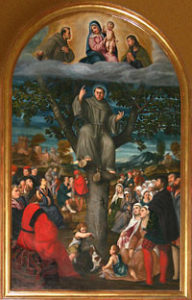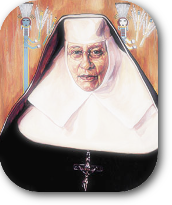
Saint of the Month
The Whole-hearted beauty of St. Anthony
Our beloved St. Anthony of Padua born Fernando Bulhones was the son of a distinguished Portuguese family who served the Church and king in the 13th century. His baptized name, Fernando, meant “seeker” or “peace combatant,” a moniker looking to a future leader’s pathways.
In his childhood, the young Fernando would make it clear that he aimed to serve Jesus. By the year 1221, he had been two years an Augustinian priest, devout and brilliant but with a profound love of the Gospel and the poor.
By the grace of God, Fr. Fernando transferred and became a Franciscan taking the name Anthony. He was led to a life of radical poverty and hermit life…taking the example of the 4th Century Egyptian hermit, Anthony, the father of Christian monasticism.
By learning to surrender his own will to serve God, knowing that is the heart of Christian living. He became a great teacher, confessor, preacher and father to the poorest of the poor. His homilies still speak to us today. As a great preacher and priest he always spoke of putting God first in our lives using the First Commandment You shall love the Lord, your God, with your whole heart… His sermons drew thousands. Hold back no corner of your heart, he said, when praying especially in asking pardon for our sins. He cited that the dear Lord’s Sacred Heart opened for us to show a love, which brought Him to the Cross, so much was his love for us and he forgave our sins to welcome us to our eternal home.
It was understood by Anthony in giving our all even to his Body and Blood he will take our “all” and will give it back to us. With a new heart cleansed and purified by God one that will never break or wear out the Eternal Life God waits for us.
The moral of his sermon: When we have to make choices, it is easier with a heart full of love, a love-filled heart burning with the image of God’s own heart.
Did you know?
That St. Anthony did not live in Padua for an extended period until 1230, the year before he died.
In the spring of 1231 he withdrew with Brothers Luke and Roger to nearby Camposampiero, where he had a treehouse hermitage. He worked on sermon notes for the major feasts of the saints and had already completed notes for the Sunday Gospels. On June 13, he died at the friary in Arcella, having received the Anointing of the Sick and holy Communion.(resources used FMA focus and St. Anthony’s Messenger.)
For further Research
The symbolism of the Walnut Tree. Christ as the Tree of Life.
Friar Jack’s E-Spirations 2007
